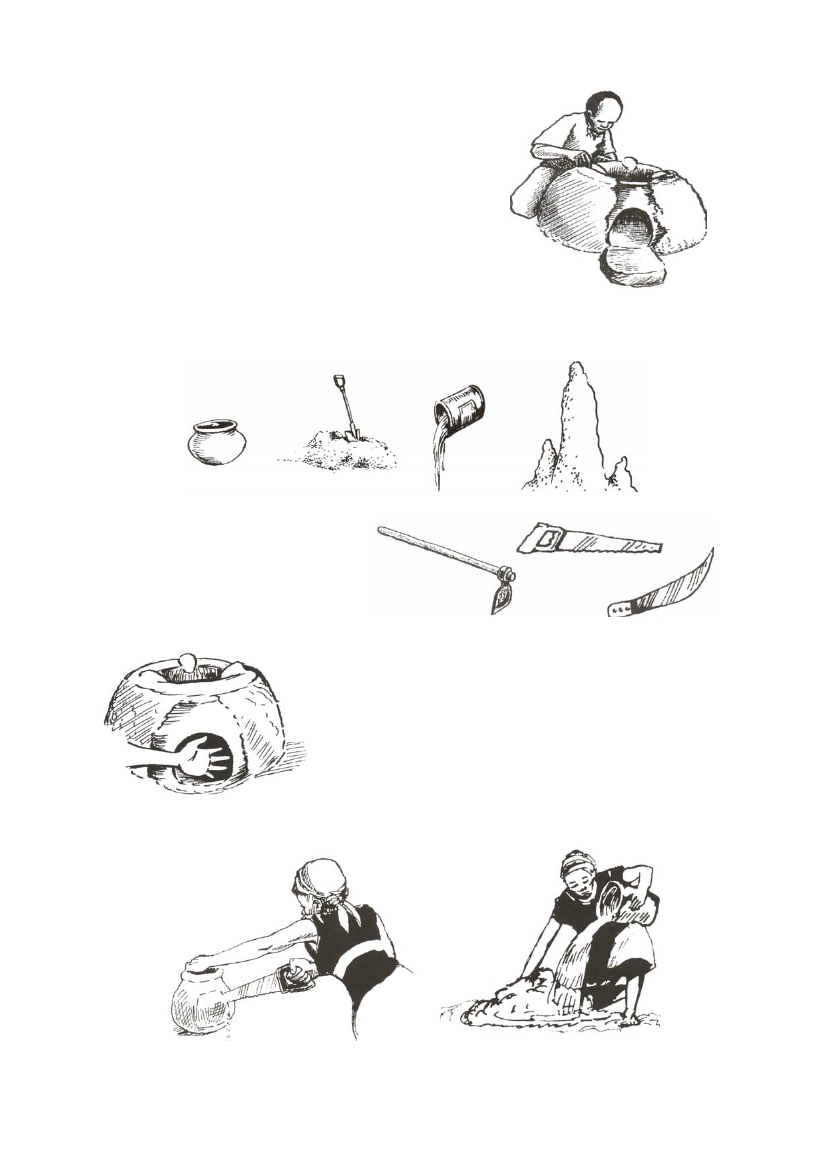
Nyungu stove
Nyungu is the Kiswahili word for cooking pot. In this book,
Nyungu refers to the earthenware coking pot. It is made from
clay and sand. Cooking pots come in many sizes; they are the
oldest item in the African kitchenware history.
The Nyungu stove technology originated
spontaneously from communities living in central Kenya and
has today developed into a standard community practice in
areas faced with lack of firewood.
The stove is made by cutting a door on the side of a
pot and fixing the pot in position in the kitchen using mud. Even
broken pots can be used.
Materials used
Sand, clay or ant hill soil, water and a clay pot.
Figure 5.44 The Nyungu Stove
Figure 5.45 A clay pot, sand, water and ant hill soil
Mixing ratios
There are no standard ratios but the mud
should neither be too wet nor too dry to
bind.
Tools commonly used
Saw panga, bucket and hoe
Figure 5.46 A hoe, saw and panga
Dimensions
The size of the door is equal to the size of the palm with the
fingers slightly spread lengthwise. The height of the fire chamber
is determined by the depth of the pot. Smaller pots are preferred.
This ensures that the fire chamber is not too large. A large fire
chamber means that you will need to use more firewood to heat
the pot as the flames have to be higher to reach the base of the
cooking pot. The wall should be thick enough to hold the pot
rests.
Figure 5.47 The size of the door
How to make the Nyungu stove
1. Cut a door on a cooking pot using a handsaw.
2. Prepare mud by missing any type of soil with water.
Figure 5.48 Cutting the door
18
Figure 5.49 Preparing mud